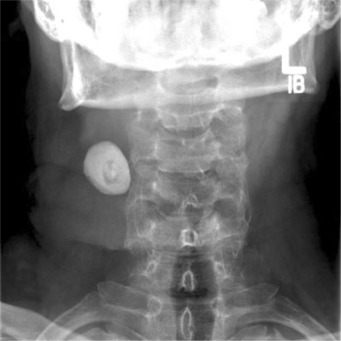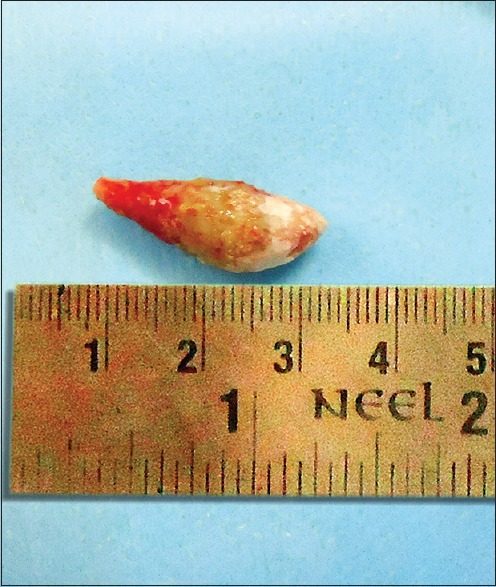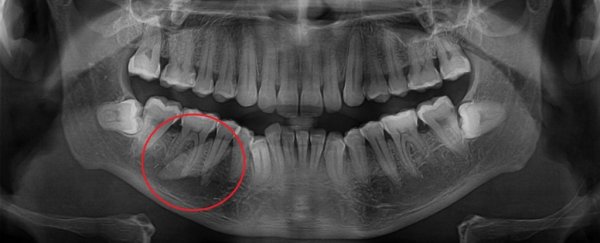A giant salivary stone, as big as an adult tooth, was recently found growing in the lower jaw of a 37-year-old male patient.
That's not something dentists deal with every day. At first, the intense swelling and pain was misdiagnosed as an impacted tooth, which refers to 'hidden' teeth that have failed to erupt from the gums.
But when an ultrasound was ordered, the practitioner found something else entirely: a shadow, two centimetres long, in the lower right salivary gland; this was clearly no tooth.
In surgery, a giant sialolith, or calcified salivary gland, was removed from the patient's jaw. Soon after, the pain and swelling diminished.
 Ultrasonography of the submandibular region showing the salivary stone. (Nilesh et al., BMJ, 2020)
Ultrasonography of the submandibular region showing the salivary stone. (Nilesh et al., BMJ, 2020)
Such calcified stones are one of the most common issues associated with salivary glands - affecting 12 out of 1,000 adults each year - but obstructions greater than 1.5 centimetres are rare.
Perhaps as a result of their novelty, these extreme cases are also well-documented, and so far, it looks as though the issue of giant salivary stones almost exclusively affects men, especially those in their 40s, 50s and 60s.
Most of the time, salivary stones are smaller than a centimetre in size, but some previous reports have described finding stones as big as 3.5 centimetres long. These massive obstructions usually appear in the submandibular gland, and there are some incredible radiographs, like the one below, that show how giant those can actually grow.
 (Royce et al., Radiology Case Reports, 2008)
(Royce et al., Radiology Case Reports, 2008)
The masses themselves are generally made of calcium phosphate or calcium carbonate, along with some salts and protein, magnesium, potassium, and ammonia.
But exactly why they form is still not clear. One idea is that the consistency of saliva changes for some reason and becomes more gel-like, creating a calcified mass. (Warning: slightly graphic photo below.)
For instance, there's a hypothesis that this happens when the body starts to produce more saliva bicarbonate, causing calcium phosphate to build up. Others think it has more to do with microbes or epithelial cells getting stuck in the salivary tract.
 (Gadve et al., Indian Journal of Dentistry, 2016)
(Gadve et al., Indian Journal of Dentistry, 2016)
None of these explanations are mutually exclusive, and while the causes remain unclear, there is good news. Surgery remains the mainstay of treatment, and it's usually quite effective.
Some evidence of these stones recurring has been reported, so experts recommend follow-ups after removal - just to make sure it's not happening again.
The case report was published in BMJ Case Reports.
